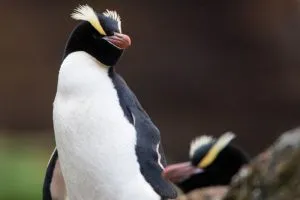One species of penguin that is particularly interesting is the snares penguin. They can be found ‘on the Snares Islands, a group of islands located off the coast of New Zealand.
In this article, we’ll take a closer look at these birds and explore 12 interesting facts about snares penguins that you may not have known. From their unique behaviors to their conservation status, we’ll dive into the world of these fascinating birds and discover what makes them so special.
1. They get their name from Snare’s Island, where they live
Snares Penguins can be found on The Snares Islands, a small group of islands about 200km south of New Zealand. During breeding season, they typically stay within 200-300km of their chosen island.
Outside of breeding season, Snares penguins spend their time in warmer regions of the Tasman Sea and the eastern Indian Ocean. They have been spotted near the New Zealand mainland, Australia, and even as far as the Falkland Islands1 (source: IUCN).
This map shows exactly where each penguin lives during breeding season.
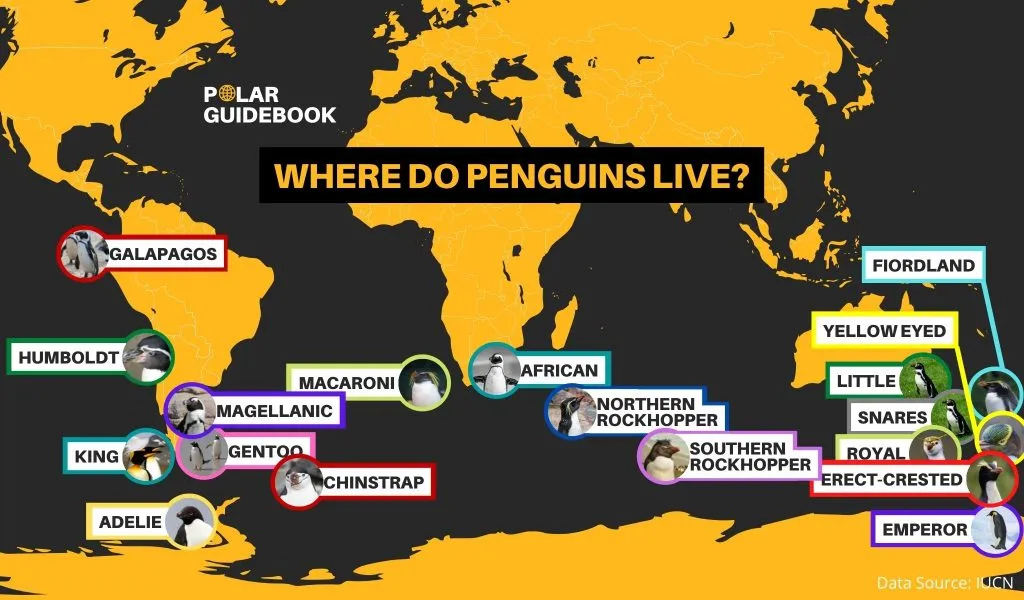
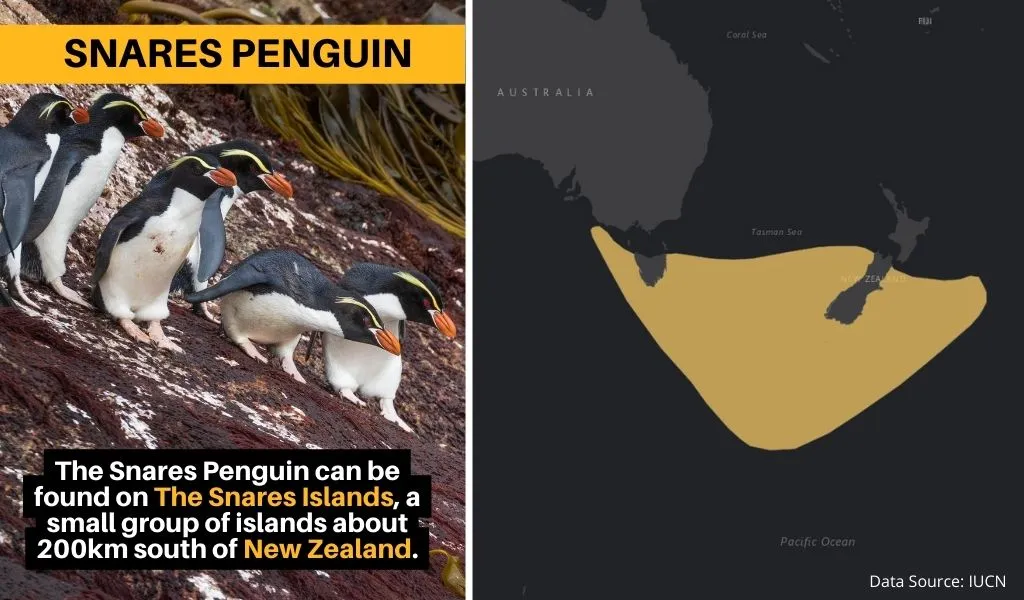
2. They are black and white to camouflage in with the ocean
Penguins have evolved a unique way of blending into their surroundings. Their black and white plumage, known as countershading, serves as a powerful camouflage in the water, where they spend the majority of their lives.
Their white belly blends with the lighter surface waters when viewed from below, while the black back provides an excellent disguise against the darkness of the deeper waters when viewed from above2 (source:H.M. Rowland, The Royal Society B Biological Sciences, Issue 364, 2008).
3. They have distinctive yellow feathers above each eye
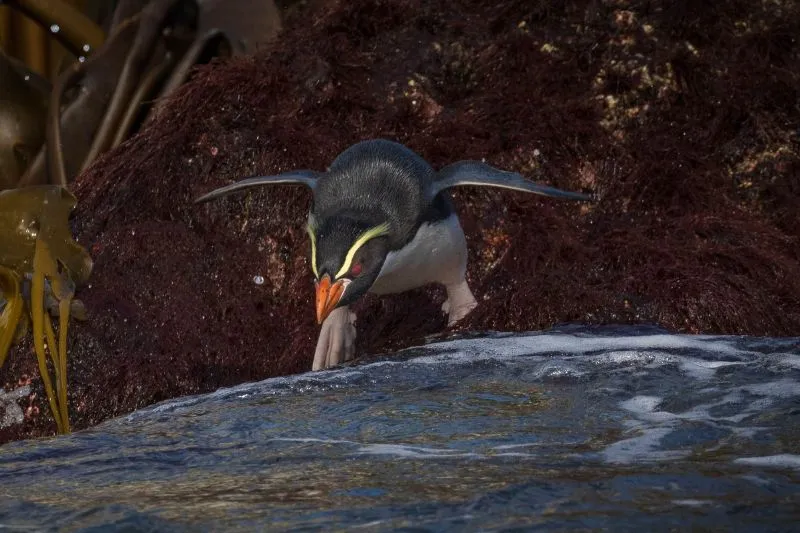
Snares penguins are part of the crested penguin family and have yellow crest feathers above each eye. These bright colors help them attract a mate by demonstrating that they are healthy enough to afford to compromise their camouflage3 (source: D. T. Ksepka, American Scientist).
Snares penguins are visually very similar to Fiordland penguins which are another type of crested penguin found in New Zealand. In fact, they are so similar that some scientists believe they should not be treated as separate species4 (source: Penguins: Natural History and Conservation).
The main way to distinguish one from the other is that Fiordlands have pink skin around their bill whereas Snares do not.
4. The lifespan of a Snares penguin is between 15-20 years old
The lifespan of a snares penguin in the wild is estimated to be between 15-20 years old. This is about average for a penguin with most species living to around 20.
In captivity, penguins live a little longer, typically around 30 years although there have been documented cases of penguins living to the ripe old age of 40 in captivity.
5. They eat krill, fish, and squid
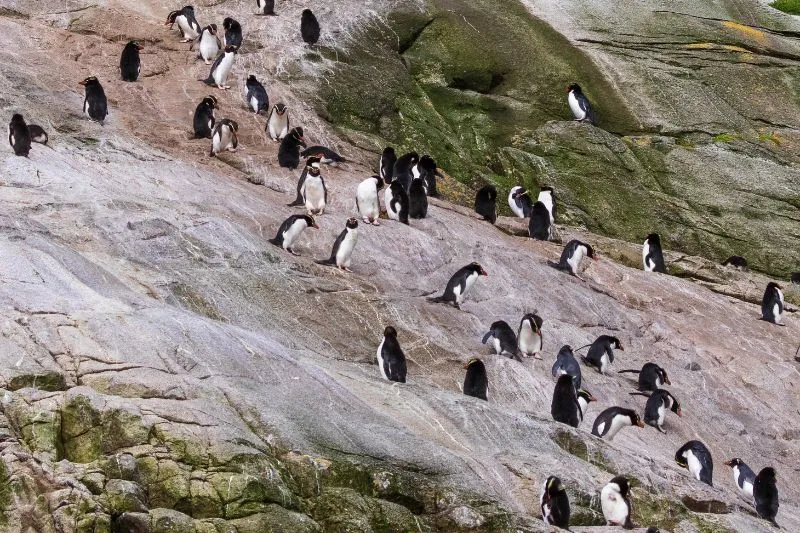
Snares penguins have a very common diet for a penguin consisting of crustaceans (mainly krill), fish, and squid (mostly arrow squid). When stomach samples were taken, researchers found that almost 60% of their diet (by weight) was krill.
Fish and arrow squid play a secondary role in their diet. The main fish they eat are red bait and red cod. They also consume a lot of Long-snouted Pipefish, Thornfish, and Rockfish which can be found on the rocky shorelines of Snares Island and are often the food that is bought home for chicks5 (source: T.Mattern, et al, Emu, Vol. 109, pp.204–213, 2009).
6. There are around 63,000 snares penguins left in the wild
Latest estimates suggest that there are around 63,000 snares penguins in the wild. Considering there are an estimated 30-31 million penguins left in the world, this makes the snares penguin one of the smallest penguin species by population.
They are considered vulnerable by the IUCN because they only inhabit one island and are susceptible to natural disasters and human activities. Vulnerable is one level better than endangered on the IUCN’s scale.
The main threats to snares penguins are commercial fisheries (particularly a large squid fishery nearby), oceanographic changes, and oil spills6 (source: IUCN).
This graph shows all penguin species and where they lie on the scale set by IUCN:
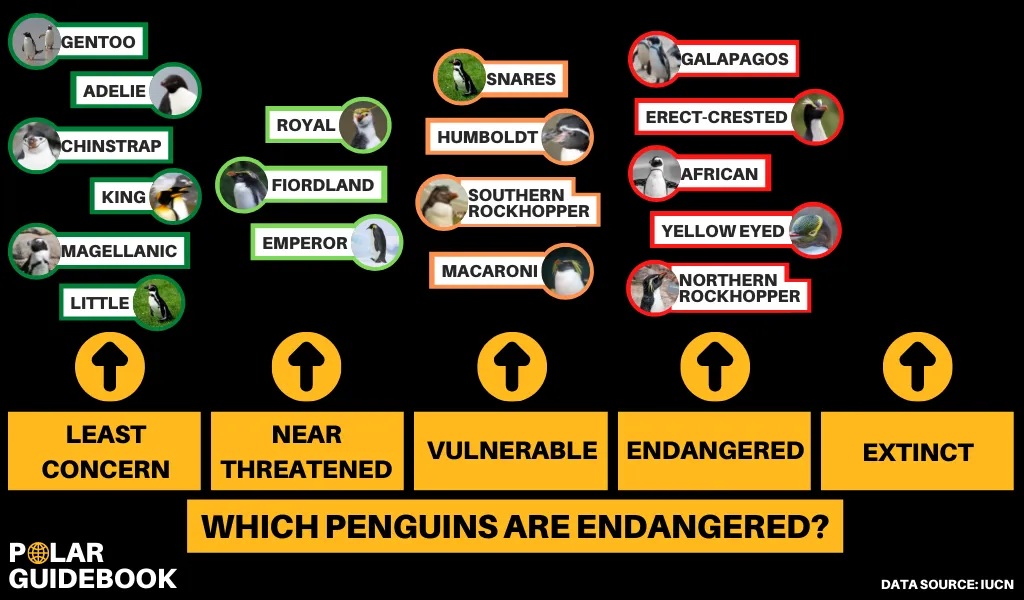
7. They lay two eggs but discard one
When breeding, snares penguins will typically lay two eggs. However, the first egg is usually much smaller than the second and is often discarded by the mother who may refuse to incubate it or push it out of the nest.
Instead, she will put all of her focus on incubating the second, larger egg. This penguin fact is common among all crested penguin species.
The purpose of this strategy has been debated by scientists for many years, but the most likely reason is that the first egg is ovulated whilst the mother is still out at sea so she cannot yet fully commit herself to the egg whilst swimming for days on end. This is why the first egg is always smaller and doomed from the outset7 (source: National Geographic).
8. Snares penguins are one of the smaller penguins with a height of up to 61cm
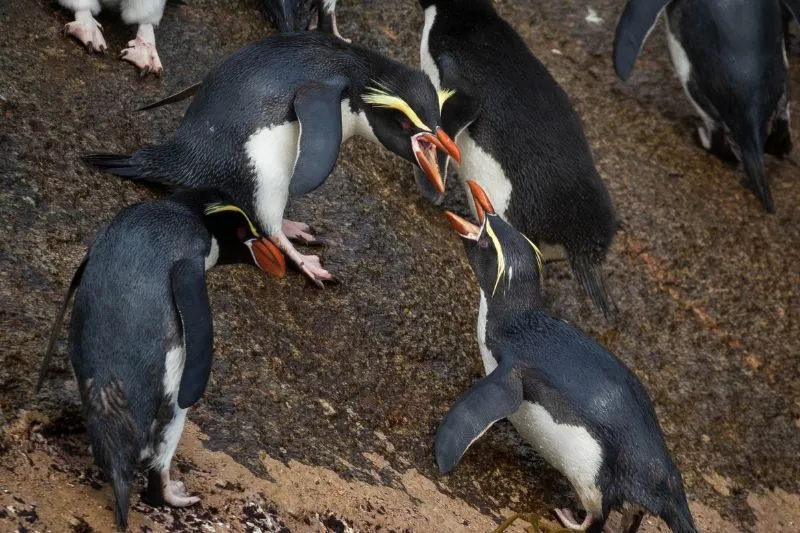
Snares penguins are below average compared to most other species. They can be up to 64cm (25“) tall and weigh between 2.5 to 3 kg (6 to 7 lbs)8 (source: Seaworld).
See our article on the size of penguins for a full comparison of all the species.
9. They are hunted by seals and sea lions
The Snares penguin has no natural land predators. Instead, their main predators are found at sea which is where the penguins spend most of their time.
Their predators include the hookers sea lion and New Zealand fur seal. They are also occasionally preyed upon by leopard seals, orcas (killer whales), and sharks.
On land, eggs and younger chicks are at risk from skuas, gulls, and southern giant petrels which may prey on unguarded eggs or fledglings. They may also prey on injured or dying adults too9 (source: Penguins: Natural History and Conservation).
10. A special salt gland allows Snares penguins to consume seawater
Snares penguins have a super orbital gland, more commonly known as a salt gland. This is found at the top of their skull, close to their eye, and allows them to reduce salt levels in their blood.
As creatures that spend most of their lives at sea or around coastal areas, they tend to ingest lots of salt water, especially when consuming food such as fish which they swallow whole.
Penguins are birds and like many other birds, their kidney is not very efficient at processing salt. The salt gland allows them to collect excess salt and excrete it as water droplets via their nostrils by sneezing or shaking their head10 (source: Britannica).
11. They build nests from twigs, stones, and mud
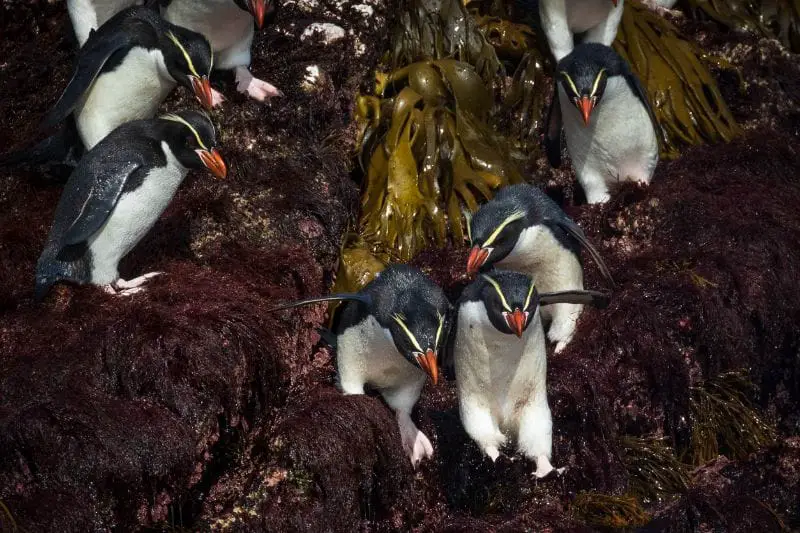
During breeding season, Snares penguins build nests in the Olearia forests or rocky coastal areas11 (source Wikipedia).
They build nests by scooping out a hole in the mud and lining it with grass, leaves, stones and twigs. This is where the female will lay eggs and they will be incubated until the chicks are born.
Colonies can range in size from as few as 10 nests to more than 1,300 nests.


![You are currently viewing 11 Facts About Snares Penguins [#6 Will Make You Want to Save Them]](https://polarguidebook.com/wp-content/uploads/2023/01/Snares-Penguin-2.jpg)
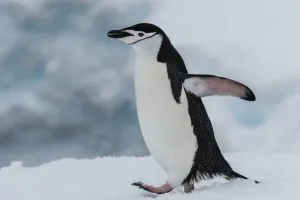
![Read more about the article 14 Humble Facts About Humboldt Penguins [#6 Will Change How You See Them]](https://polarguidebook.com/wp-content/uploads/2023/01/Humboldt-Penguin-2-300x200.jpg)
